Breeding
Strategies To Avoid Producing Dogs Affected With Progressive
Retinal Atrophy
The
Mutation
Scientists at the Animal Health Trust (AHT) have identified
the mutation that causes progressive retinal atrophy
(PRA) in the miniature long-haired Dachshund (MLHD).
The mutation alters the DNA of a gene that is involved
with the normal functioning of the retina.
PRA in the MLHD is a recessive disease - this means
that a dog has to inherit two copies of the mutation
for it to be affected with PRA. If a dog has one copy
of the mutation and one normal copy of the gene it is
a carrier. Carriers never develop PRA but will pass
the mutation to about half of their offspring. If a
dog has two normal copies of the gene it is said to
be clear of PRA. Clear dogs will never develop PRA and
cannot pass the mutation to any of their offspring.
Gamete Production
Each dog carriers two copies of the PRA gene. If it
carries:
"
two normal copies (N N) it is clear of PRA
" one normal copy and one mutated copy (N M)it
is a carrier of PRA
" two mutated copies (M M) it is affected with
PRA
When
a dog produces gametes (either eggs or sperm, depending
on whether it is a male or female) one copy of the gene
passes into each gamete. Every egg & sperm inherits
one of its parents two copies of the gene, the copy
that it inherits is entirely random. Therefore, a carrier
(N M) will pass the normal gene to approximately half
of its gametes and the mutant gene to the other half
of its gametes. A clear dog (N N) will pass a normal
copy of the gene into all its gametes (because it only
has normal copies to pass) and an affected (M M) dog
will pass the mutated copy to every one of its gametes
(because that is all it has to pass) Figure 1.
Which Dogs Can Be Mated Safely?
Upon fertilisation an egg and a sperm unite and the
resulting embryo inherits the two copies of the PRA
gene that were present in the egg and the sperm. Whether
the resulting puppy will be affected with PRA depends
on which two copies of the PRA gene it inherited from
its parents. Figure 2 illustrates the outcome of the
six mating different combinations that are possible.
The following combinations of dogs can NOT produce any
affected puppies:
Clear
X Clear
Clear x Carrier
Affected x Clear
However, mating a clear with a carrier will result in
half the puppies being carriers, so any dogs wanted
for breeding should be tested to determine their PRA
status. All the puppies resulting from an affected x
clear mating will be carriers. There is no need to test
these puppies, but they should only be mated to tested
clear dogs.
It
is important to remember that the gametes inherit copies
of the PRA gene AT RANDOM. Therefore, the proportions
given in figure 2 are approximate. For example, if a
carrier x carrier mating results in 4 puppies, on average
we would expect 1 to be clear, 1 to be affected and
two to be carriers. But not every litter will produce
exactly that outcome. It is possible (although less
likely) for the same two carriers to produce four affected
puppies - just as it is possible to toss a coin four
times and get four heads, although it is more likely
you would get two heads and two tails.
Figure
1. Gamete production
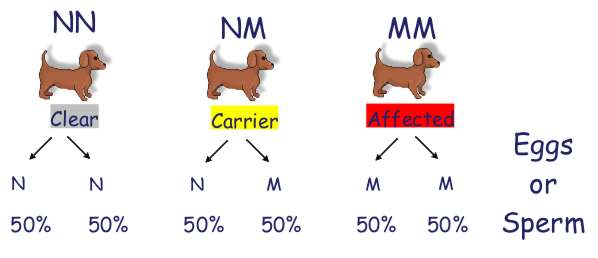
Figure 2. Mating Outcomes
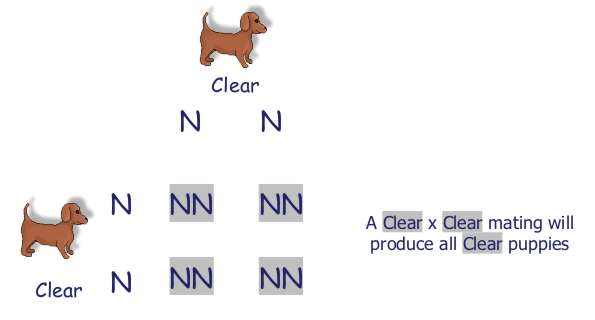
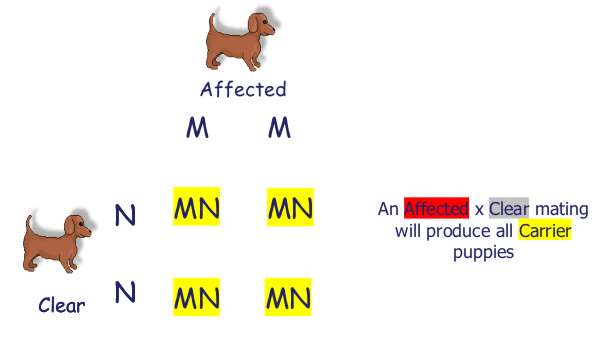
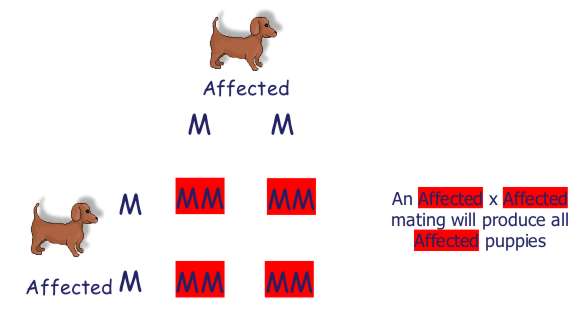
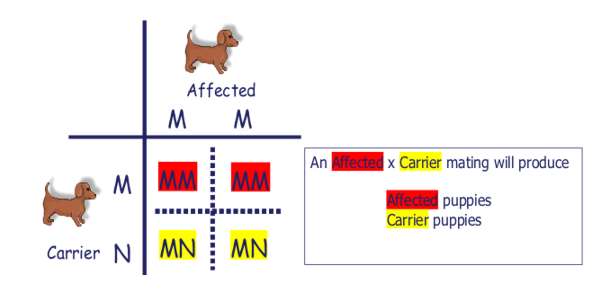
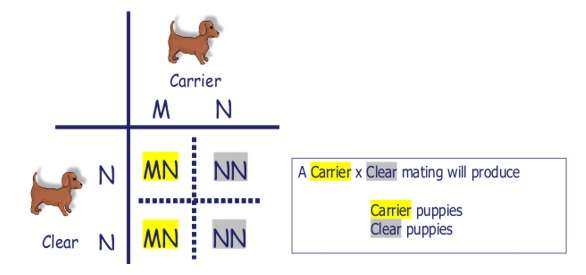
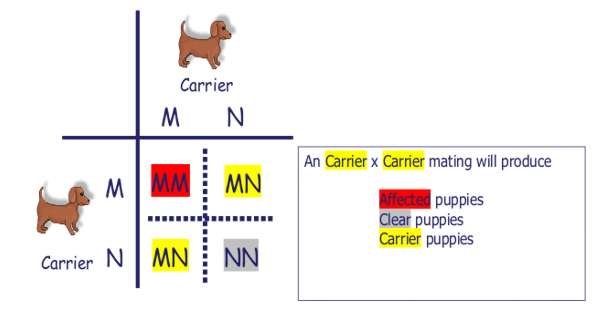
©
Cathryn Mellersh from The Animal Health Trust (UK)
